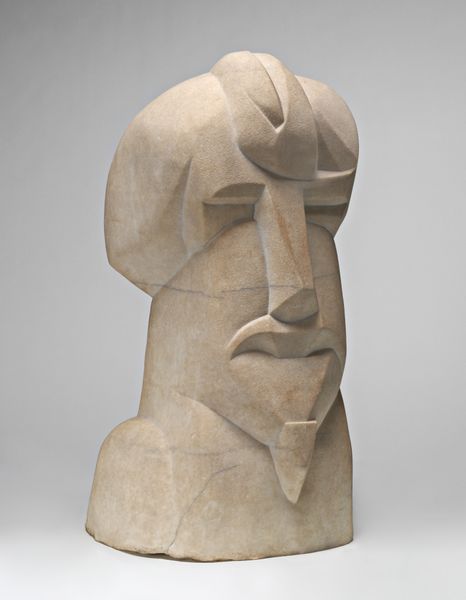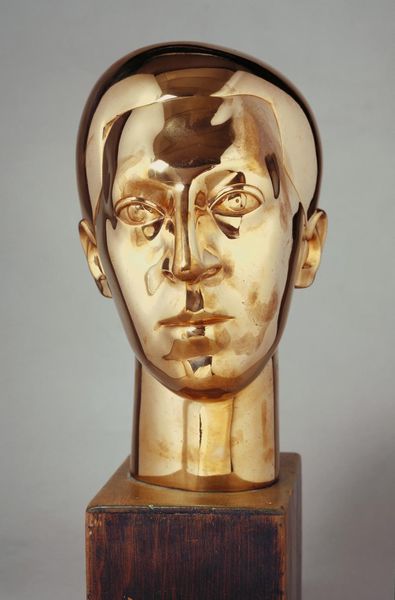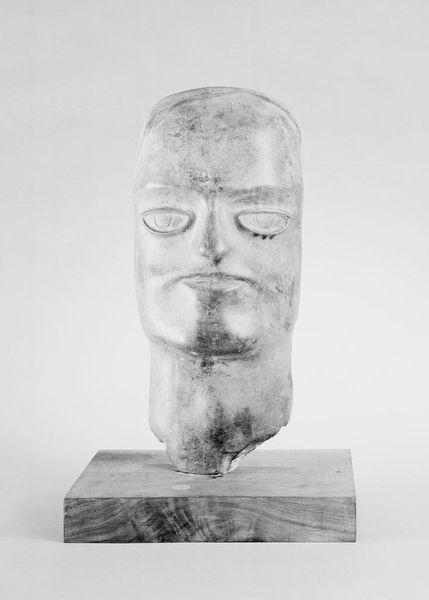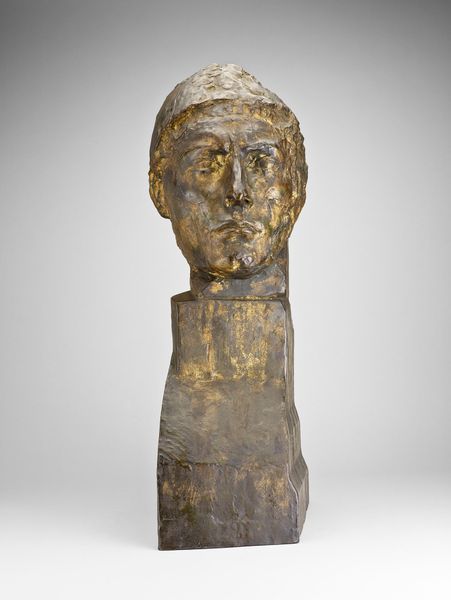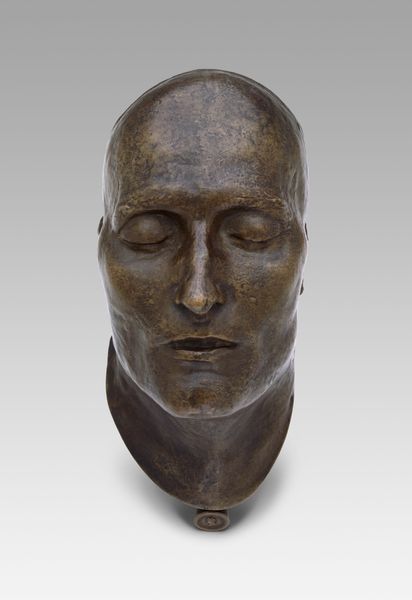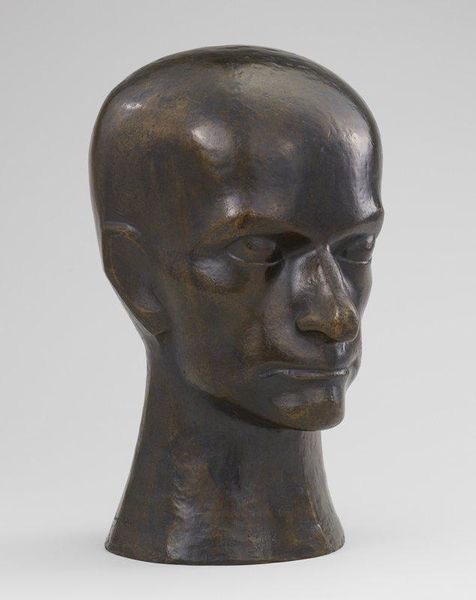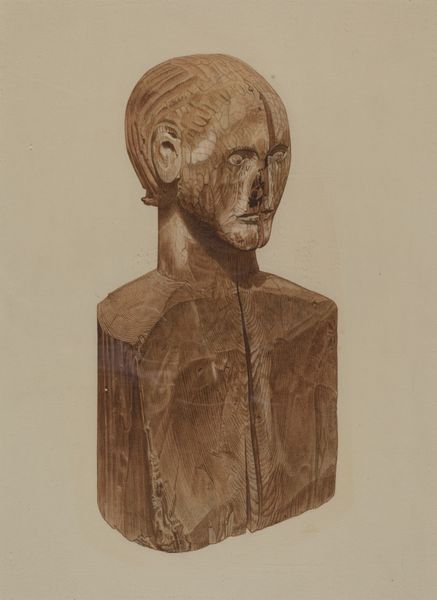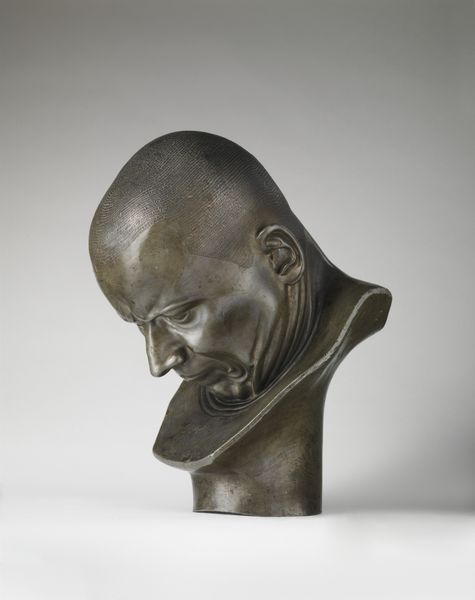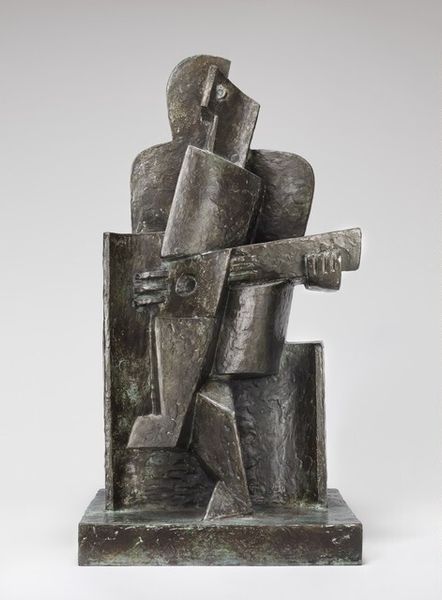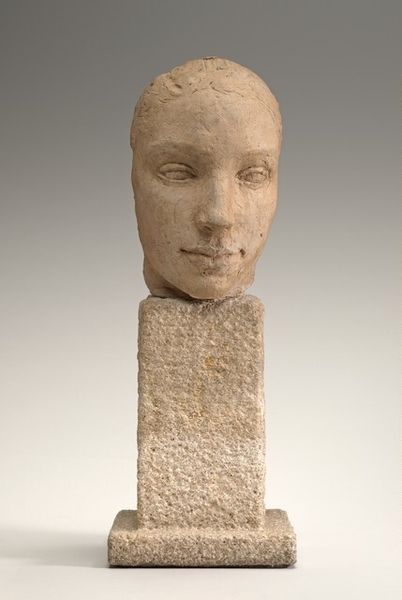
carving, sculpture
#
statue
#
carving
#
head
#
sculpture
#
sculpture
#
symbolism
#
graphite
#
statue
Dimensions: 46 x 39 cm
Copyright: Public domain US
Editor: Here we have Boleslas Biegas' "Le Sphinx" from 1902, a carved sculpture currently housed at the Musée d'Orsay. There's something so haunting and otherworldly about it. How do you interpret this work, considering its social or historical context? Curator: Given the date, the Symbolist movement certainly comes to mind. Biegas, a Polish artist working in France, created this Sphinx at a time when Symbolism was grappling with representing inner, subjective realities. Sphinxes, of course, have long historical and cultural associations with mystery and guarding secrets. Editor: That's interesting. I mostly thought of it as this enigmatic face, carved. Does the choice of sculpting a sphinx have specific resonance for Biegas' Polish identity in early 20th century France? Curator: Absolutely. Consider the sociopolitical landscape: Poland was partitioned and under foreign rule. The sphinx could represent Poland's silent suffering, its unanswered questions about its national identity and future, posed to the world. Biegas often addressed spiritual and nationalistic themes, so this symbolism wouldn't be out of character. Does that framing influence your understanding? Editor: It does. Knowing that he might have been expressing his country's struggles gives a whole new level of meaning to what I perceived as just a face. Curator: Precisely. The sculpture’s presence in the Musée d'Orsay then signifies a negotiation of Polish artistic identity within the dominant French art establishment. It becomes a statement about cultural exchange and the museum's role in validating and exhibiting art beyond national boundaries. Editor: It's amazing how the history gives such a different angle to an object and how important the museum context really is. Curator: Exactly! Thinking about how the context is always shaped by political and cultural backgrounds and agendas of exhibition provides us a deeper understanding of an object and ourselves.
Comments
No comments
Be the first to comment and join the conversation on the ultimate creative platform.
